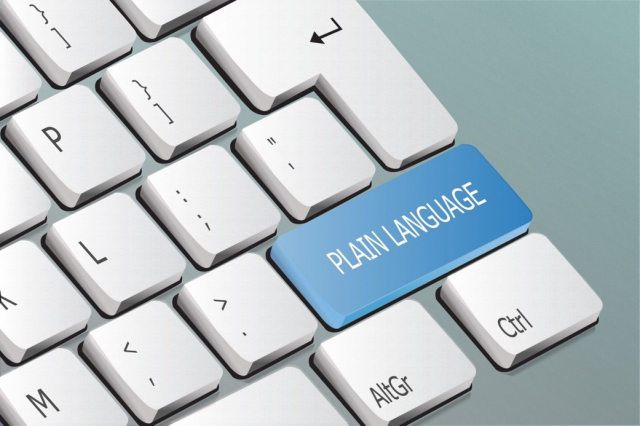By Leanna Lane Ferguson
 In technical communication, clarity and precision are essential. Whether you are creating instruction manuals, software documentation, or any other form of technical content, the goal is to convey complex information in a way that is easily understandable to your audience. Plain language means making complex terms simpler, using clear and everyday language, and organizing information in a way that helps readers understand it better. The art of clear and precise communication allows people to bridge the divide between complexity and comprehension, ultimately empowering readers to navigate content efficiently.
In technical communication, clarity and precision are essential. Whether you are creating instruction manuals, software documentation, or any other form of technical content, the goal is to convey complex information in a way that is easily understandable to your audience. Plain language means making complex terms simpler, using clear and everyday language, and organizing information in a way that helps readers understand it better. The art of clear and precise communication allows people to bridge the divide between complexity and comprehension, ultimately empowering readers to navigate content efficiently.
What is Plain Language?
Plain language is a style of communication that prioritizes simplicity, clarity, and accessibility. In other words, it's about using straightforward, everyday language to convey complex ideas or information. The goal of plain language is to ensure that the audience can quickly grasp the content without unnecessary confusion or ambiguity.
Beyond its practical benefits, plain language also carries legal significance. In many countries, including the United States, there are legal requirements that encourage or require the use of plain language in certain types of documents. These requirements stem from a commitment to protect consumer rights and ensure that vital information, particularly in fields like finance, healthcare, and consumer products, is comprehensible to the average person.
The Benefits of Using Plain Language
Improved Understanding
The primary advantage of using plain language in technical communication is improved understanding. Technical topics can be challenging, and using jargon or complex language can create barriers for readers. Plain language breaks down these barriers, making it easier for readers to comprehend the content.
Increased Accessibility
Plain language makes content more accessible for more people. It ensures that your content can be easily understood by people with various levels of expertise, including those who may not have a technical background. This inclusivity is crucial in today's diverse and interconnected world.
Enhanced User Experience
When technical documentation is written in plain language, users are more likely to have a positive experience, making it easier for them to accomplish tasks and understand the material. They can find answers to their questions quickly and without frustration, which can lead to higher customer satisfaction and loyalty.
Reduced Errors and Misinterpretations
Complex language and convoluted explanations can lead to misunderstandings, errors, and even safety risks in certain contexts, such as product manuals or medical instructions. Plain language increases the likelihood of readers interpreting your content directly, which is crucial when accuracy is essential.
Time and Cost Savings
Using plain language can save time and resources for both writers and readers. Writers spend less time explaining complex terms and concepts, while readers spend less time trying to decipher confusing content.
Tips for Implementing Plain Language
- Know Your Audience: It is important to keep your audience in mind for your writing to stay on track. Understand who your readers are and tailor your language to their level of expertise and familiarity with the subject matter.
- Use Clear and Simple Language: Avoid jargon, technical terms, and overly complex sentences. Instead, use everyday words and straightforward sentences.
- Organize Content Effectively: Structure your content logically with headings, lists, and bullet points to make it easy to scan and navigate.
- Test with Users: If possible, gather feedback from your target audience to ensure that your content is truly understandable and user-friendly.
- Revise and Edit: Review your content for clarity and conciseness. Eliminate any unnecessary words or phrases that may confuse readers.
In the realm of technical communication, plain language is a powerful tool for making complex information accessible and understandable. It benefits not only the readers but also the writers, by streamlining the communication process and enhancing the user experience. By embracing plain language principles, technical communicators can bridge the gap between complexity and clarity, ultimately delivering more effective and valuable content to their audience.
Learn More
At the University of North Texas, we offer Technical Communication classes where students can learn how to effectively apply plain language principles in their communication efforts. Whether they are creating user manuals, software documentation, or other technical content, our program equips students with the skills and knowledge needed to excel in the field of technical communication.
Interested in learning more? Follow us on Instagram, LinkedIn, and Facebook to stay updated on the latest industry trends, success stories, and opportunities. Join us at UNT's Technical Communication department and kickstart your career in this vibrant and ever-evolving field.

